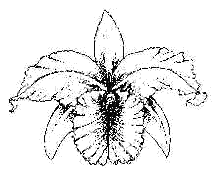
Most people would think of an orchid as a beautiful, maybe rare flower. Orchids (and other flowers- See Georgia O'Keefe's work) have been depicted in art as having a sensual allure, or even looking like a representation if genitalia in nature. Some orchids grow, bloom and thrive in the most amazing places in harsh environs, while others take great care to cultivate. Orchids come in a variety of species and colors, just like those within the spectrum of the DSD's (Disorders of Sex Development) like AIS. To me this is powerful symbolism.
According to the US-AIS Support group or AISSG:
"Orchids - symbolic of rare and beautiful women. All the more fitting an icon since many of us [with AIS,] have had surgery known as an orchidectomy, orchiectomy or gonadectomy. The medical term for testes is orchids (from the Greek "orkhis"). " Meaning that the orkhis or testis/gonads were surgically removed for a variety of reasons.






1 comment:
Well done! The blog looks great!
Post a Comment